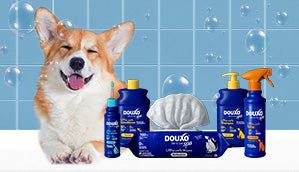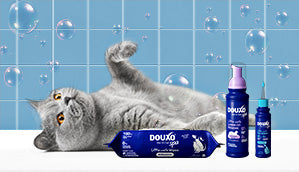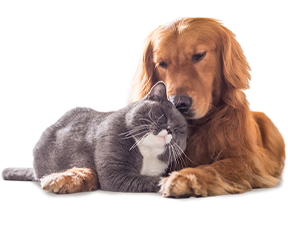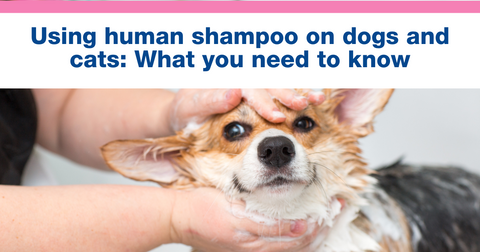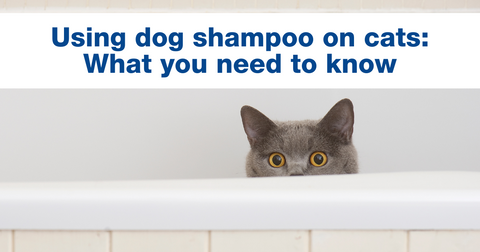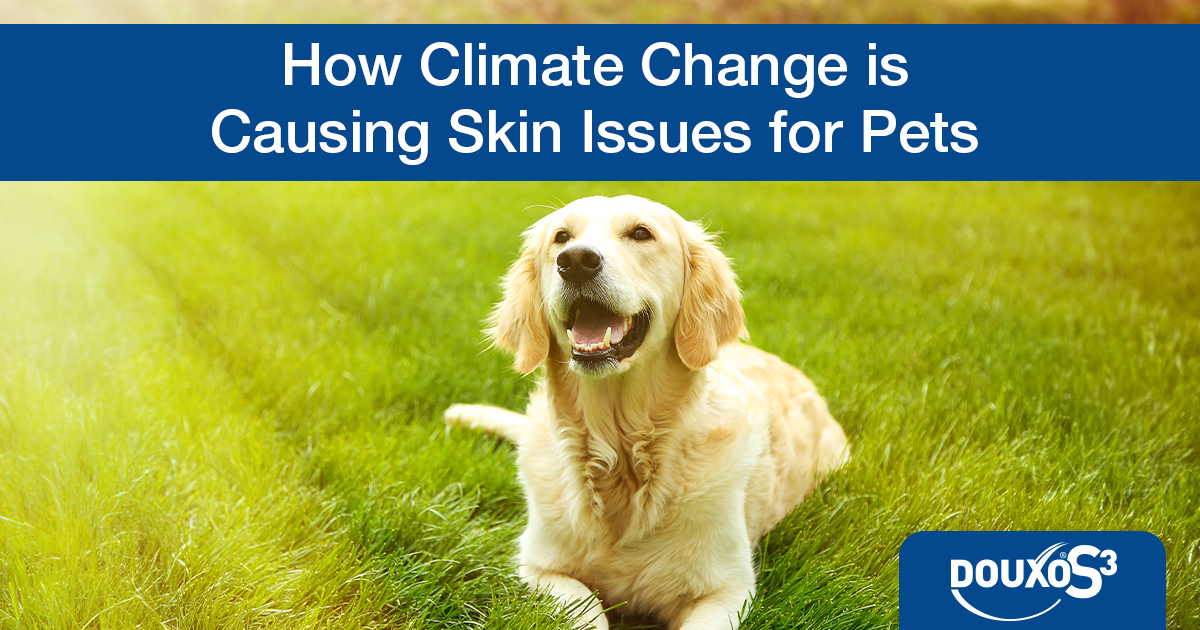
How Climate Change is Causing Skin Issues for Pets
We all love a touch of warmer weather: a chance to get out in the sun, enjoy a picnic or ice cream, and watch our pets having fun! But the sad reality of climate change paints something of a different picture.
In fact, as the world gets warmer and weather patterns grow more unpredictable, the impact of climate change is becoming increasingly difficult to ignore. And while it’s all too easy to focus on what this means for humans, climate change is affecting our pets too—especially when it comes to the health of their skin and coat.
If you’ve noticed your dog is itching more than usual or your cat is suddenly shedding excessively, the culprit might not be something in your home but something in the air. And with global warming here, the symptoms only show signs of increasing.
In today’s blog, we’ll take a closer look at how pets and climate change are more connected than we might think, and what we can do to keep our cats and dogs comfortable and protected. Here’s a breakdown of what we’ll cover:
- How climate change affects our pets
- The impact on dermatological problems for pets:
- Fleas & ticks
- Seasonal allergies
- Sunburn and UV exposure
- Dryness and dehydration
- Infections on the rise
- Shedding
- How to protect your pet’s dermatological health
- Pets & climate change FAQs
Climate Change Isn’t Just a Human Problem
Whenever the subject of global warming and its impact on animals comes up in the news, we tend to think of endangered species or melting polar ice caps. But even at home, your pet may be experiencing the knock-on effects of a changing climate.
Cats and dogs are often highly sensitive to their environment, and any shifts in weather patterns, temperature, and humidity can all influence their comfort and health. Even indirectly, rising temperatures mean an increase in allergens like pollen and bacteria, which create their own impact too. It’s no surprise then that so many of our beloved pets are showing signs of dermatological stress.
In short, pets and climate change are closely linked. That means we, as their caregivers, need to be more proactive than ever.

Pet Skin & Coat Conditions on the Rise
There has arguably been a steady increase in skin-related issues for cats and dogs over the last few years, and many believe that climate change is affecting animals by creating the perfect storm for dermatological problems.
Let’s take a look at the most common skin and coat concerns linked to environmental changes:
Parasites All Year Round
Fleas and ticks used to be known as seasonal pests, but warmer winters and longer periods of mild weather enable them to survive – and even thrive – all year round in many regions. This means dogs and cats can be exposed to these parasites more often, increasing the risk of:
- Itchy bites and skin irritation
- Flea allergy dermatitis
- Tick-borne illnesses (like Lyme disease)
- Secondary infections caused by scratching
This decline of a “pest-free” season means we need to remain vigilant year-round, using consistent parasite protection for and checking our pets regularly.
Allergy Seasons Are Getting Longer
Seasonal allergies in dogs and cats are becoming harder to manage because the allergens themselves – including pollen, mould, grasses, and weeds – are lingering in the environment for longer stretches of time. In turn, this prolonged exposure can lead to more sustained allergy symptoms, with itching, redness, ear infections, sneezing, and watery eyes all possible side effects.
What’s more, because pets can’t tell us when they’re uncomfortable, symptoms can sometimes go unnoticed despite our pets’ discomfort.
If you do notice your pet experiencing itchy, irritated, or sensitive skin, we recommend trying our DOUXO® S3 CALM range. The sensitive, specially created formula was designed to protect your pet’s skin barrier from allergens and to hydrate rather than dry out the skin. What’s more, DOUXO® S3 CALM is available in either a shampoo, mousse, or pads, ensuring there’s a suitable option to support your pet.
Sunburn & UV Exposure
Just like humans, our pets can suffer from sunburn. And with the depletion of the ozone layer leading to stronger UV rays, that risk is likely to grow.
Cats and dogs who love sunbathing or who have a knack for rooting out warm spots may be particularly at risk. Protective pet-safe suncream – especially on ear tips and noses – and limiting sun exposure during the peak of the day is recommended to keep your pet’s skin safe.
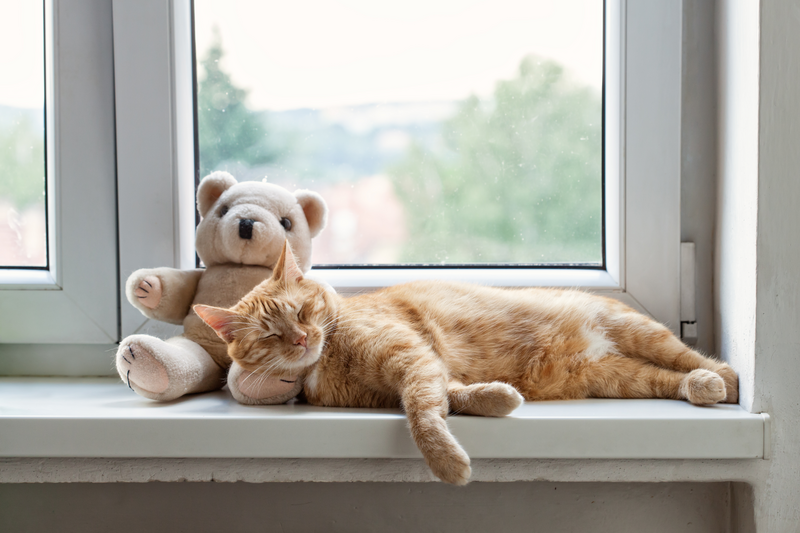
Dryness & Dehydration
Whether it’s scorching outdoor heat or artificial indoor heating during excessively cold months brought on by climate change, both can strip your pet’s skin of moisture. This can lead to:
- Flaky, itchy, or rough skin
- A dull or brittle coat
- Increased sensitivity to irritants
- Higher likelihood of cracks or lesions
Because pets can’t moisturise themselves, and licking is likely to worsen dryness, it’s important to step in with hydration-boosting, pH-balanced skincare products that have been designed for pets. Our DOUXO® S3 range is effective for both cats and dogs, providing gentle maintenance and hydration to help even the most sensitive skin remain healthy. If your pet is prone to itchy, irritated, or sensitive skin, DOUXO® S3 CALM is the ideal soothing solution, protecting your cat or dog’s skin from the effects of climate change.
Infections on the Rise
A weakened skin barrier will be more vulnerable to bacteria. And to make matters worse, the increase in both heat and humidity brought on by climate change is creating an ideal environment
for harmful microorganisms to flourish. Combine that with more scratching due to allergies or dryness, and your pet’s skin can easily become infected.
Common signs of skin infection include:
- Hot spots
- Oozing or crusty sores
- Odour
- Hair loss in patches
- Frequent licking or biting at the skin Prevention is key, especially during peak heat or allergy seasons. For this, we recommend DOUXO® S3 PYO: our range of skincare products intended to disinfect cats and dogs with bacterial or yeast imbalances. While repeated applications from other disinfectant products can dry out a pet’s skin, DOUXO® S3 PYO has been specially formulated to hydrate while providing complete antiseptic action.
Shedding Surges
Have you noticed more hairballs around the house or that your dog seems to be shedding more than usual? Temperature fluctuations can confuse your pet’s natural biological signals, disrupting their usual shedding cycle. This can cause excessive or unpredictable shedding, a patchy coat appearance, and even skin irritation beneath the fur.
While this can be frustrating for us – as no one enjoys having to clean up all that fur – it’s significantly worse for our pets and can be a sign that their body is struggling to adjust to the environment.
How to Protect Your Pet’s Dermatological Health from Climate Change
With climate change affecting our pets’ skin and coats in unpredictable ways, a proactive, supportive approach can make all the difference. Thankfully, there are simple yet effective ways to care for your pet’s dermatological health, many of which of you can start immediately.
Here’s how you can help your pet stay comfortable in their skin:
- Stay on parasite control – Regularly check your pet for fleas and ticks, especially in warm, humid weather. Parasite bites can lead to intense itching and secondary infections, so early intervention is key, while a pet-safe preventative should be used all-year round.
- Create a climate-friendly home – Aim to keep your indoor environment well-balanced: avoid overheating, use humidifiers during dry winter months, and consider air purifiers to help reduce exposure to allergens like pollen and mould.
- Hydrate from the outside in – If you pet is battling dry, flaky skin or irritated patches from allergens, it’s important to nourish their skin barrier. Our DOUXO® S3 range can be particularly effective if your pet is experiencing dermatological problems, helping to restore and maintain the skin’s protective barrier while soothing inflammation and supporting healthy skin.
- Stick to a dermatology routine – Just like us, pets benefit from consistent skincare. Regular support with the right products can help reduce allergens, soothe irritation, and boost overall skin health. Our DOUXO® SPA range is the perfect solution for continued and regular use, using ultra-gentle formulas to hydrate- and strengthen- your pet’s skin.
As ever, if you notice any issues developing in your pet’s skin or general health, you should consult with your vet. Skin problems may be an indicator of a larger issue, and your vet will be best placed to discuss the most appropriate course of action.
Pets & Climate Change FAQs
What is the impact of climate change on our pets?
Climate change is affecting our pets in a number of ways, both directly and indirectly. Rises in temperature and unpredictable weather patterns can impact our pets’ health and skin, while longer allergy seasons, increased pest populations, and greater exposure to bacteria can also have an adverse effect. Taking a proactive approach to our pets’ skincare can help minimise these risks and ensure our pets remain comfortable and contented.
How long do seasonal allergies in pets usually last?
As their name suggests, seasonal allergies for both cats and dogs are usually limited to just one or two seasons; most often spring and summer. However, with changing weather patterns, seasonal allergies can increasingly last longer than a typical season. In some areas, pets may experience allergy symptoms for several months or even year-round.
How can I tell if my pet’s dermatology patterns are caused by the weather?
Watch for changing weather patterns—does itching or shedding worsen at specific times of the year? Also consider environmental triggers like pollen, heat, or spikes in humidity. Your vet can also help you identify the root cause.
Can poor air quality or pollution affect my pet’s skin health?
Absolutely. Just like in humans, exposure to pollutants and airborne irritants can lead to dryness, irritation, and allergy symptoms in pets. Indoor air quality matters too!
To continue learning more about caring for our pets’ skin and coats, why not explore our other articles online? Or if you’d prefer to receive our latest news and updates straight into your inbox, don’t forget to sign up to our newsletter!





